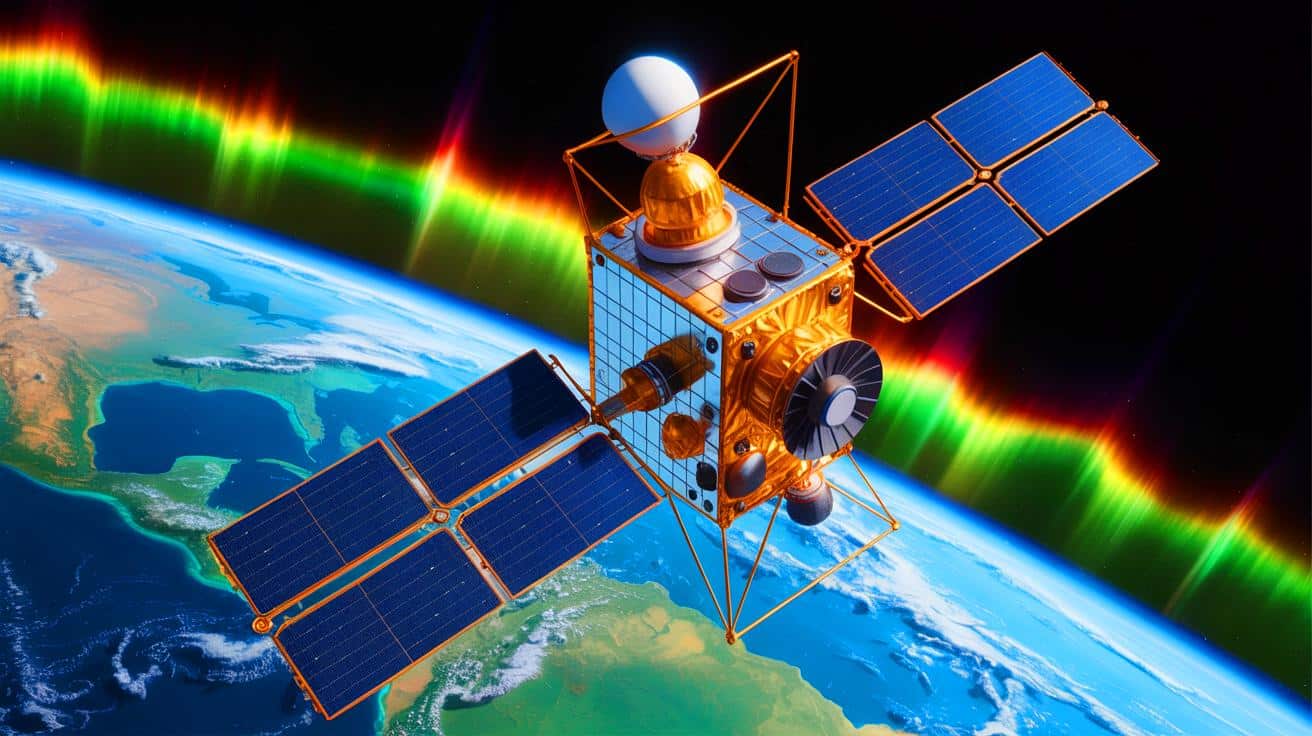IN A NUTSHELL
🛰️ NASA monitors the South Atlantic Anomaly, a region impacting satellite operations due to weakened magnetic intensity.
🌌 The anomaly poses risks to spacecraft systems by exposing them to charged solar particles.
🔍 Research reveals the SAA’s dynamic evolution, including a potential split into two distinct cells.
🧭 The anomaly’s broader implications affect Earth’s magnetic field and could influence auroras.
NASA’s vigilant monitoring of the South Atlantic Anomaly (SAA) has sparked interest and concern within the scientific community. This vast region, characterized by lower magnetic intensity, stretches between South America and southwest Africa. While it poses no direct threat to terrestrial life, it significantly impacts spacecraft and satellite operations. As these technologies traverse the anomaly, they risk malfunctions from exposure to charged solar particles. The unpredictable nature of the SAA poses a challenge, prompting NASA to utilize its resources to understand this unique phenomenon better.
The South Atlantic Anomaly: A Closer Look
The South Atlantic Anomaly has been a focal point for scientists due to its unique characteristics. This extensive area of weakened magnetic intensity acts like a “dent” in Earth’s magnetic shield. NASA has observed that the SAA particularly affects satellites and other low-Earth orbit technologies. The International Space Station, for example, experiences reduced magnetic protection when passing through this region, making it vulnerable to high-energy solar protons. Such exposure can lead to malfunctions or even permanent damage to onboard systems.
Satellite operators must be cautious and often shut down systems temporarily to prevent data loss or damage. Despite these challenges, the anomaly presents a valuable opportunity for scientific study. By investigating the SAA, NASA hopes to gain insights into Earth’s magnetic field and its broader effects. Understanding these dynamics could enhance our knowledge of both terrestrial and space environments.
Unraveling the Mystery of Earth’s Magnetic Field
Delving into the South Atlantic Anomaly requires an understanding of Earth’s magnetic field. This protective shield is generated by the movement of molten iron within Earth’s outer core. The dynamic flow of this iron creates electrical currents, which in turn produce the magnetic field. However, this field is not evenly distributed across the planet. Scientists have discovered a significant geological feature, the African Large Low Shear Velocity Province, located about 1,800 miles beneath the surface, contributing to the SAA’s effects.
This dense rock formation disrupts the formation of the magnetic field, leading to localized weakening. Additionally, the tilt of Earth’s magnetic axis complicates the field’s behavior, resulting in the SAA’s emergence as a region with reduced magnetic intensity. NASA’s research endeavors are focused on unraveling these complex interactions to better understand the mechanisms behind the SAA’s evolution and its potential impacts.
Tracking the Anomaly’s Dynamic Evolution
Recent research has highlighted that the South Atlantic Anomaly is not a static phenomenon. Instead, it undergoes dynamic changes in its size and shape. In 2016, studies led by NASA scientists revealed the SAA’s gradual drift across Earth’s surface. This movement was further confirmed by data from CubeSats, which provided crucial information for tracking its evolution. More recently, the anomaly has shown signs of splitting into two distinct regions.
In 2020, researchers observed that the SAA appeared to be dividing, creating separate centers of minimum magnetic intensity. This discovery raises significant questions about the future trajectory of the anomaly and its long-term implications. While its precise impact on Earth’s magnetic field remains uncertain, evidence suggests that the SAA has been a recurring feature for millions of years, alleviating concerns about an imminent magnetic field reversal.
The Broader Implications of the Anomaly
The South Atlantic Anomaly’s influence extends beyond impacting spacecraft and satellites. Recent studies have also examined its effects on auroras, adding another layer of complexity. As scientists continue to explore the anomaly’s mysteries, they are left with an array of questions. The SAA serves as a reminder of the dynamic nature of Earth’s magnetic field and the importance of ongoing research.
NASA’s dedication to monitoring the SAA highlights the need to understand this magnetic anomaly. By studying its behavior and changes, researchers can develop models and predictions that improve our understanding of Earth’s magnetic environment. The anomaly’s continual evolution underscores the importance of ongoing missions and data collection, offering a unique opportunity for scientific discovery and exploration.
As NASA continues to monitor the South Atlantic Anomaly, the scientific community remains captivated by its complexities. The anomaly’s dynamic nature and potential implications for Earth’s magnetic field offer a wealth of research opportunities. As we strive to understand this enigmatic phenomenon, a pressing question remains: How will the South Atlantic Anomaly evolve, and what does its future hold for our planet and technological advancements?
This article is based on verified sources and supported by editorial technologies.
Did you like it? 4.3/5 (24)

